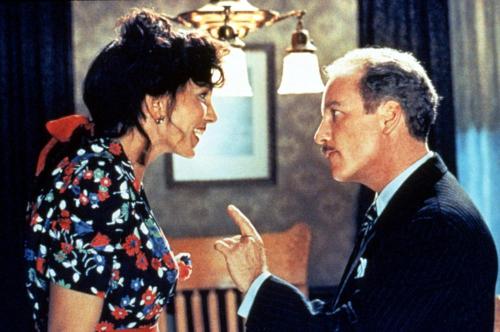Cast: Paul Newman, Melvyn Douglas, Patricia Neal, Brandon De Wilde, Whit Bissell, Crahan Denton, John Ashley, Val Avery, George Petrie.
Screenplay: Irving Ravetch, Harriet Frank Jr.,
based on a novel by Larry McMurtry.
Cinematography: James Wong Howe.
Art direction: Tambi Larsen, Hal Pereira.
Film editing: Frank Bracht.
Music: Elmer Bernstein.
Hud and
Mud as back-to-back blog entries: Purely accidental, but I rather like it. It set me to thinking that if
Hud were ever (god forbid!) remade, Matthew McConaughey would be a good substitute for Paul Newman. Or rather, would have been, since McConaughey is 50, where Newman was exactly the right age when he played Hud. But both actors have that innate charisma blended with a soupçon of something not quite trustworthy that makes them such fun to watch. And fun to watch is what
Hud is, despite the title character's anti-heroicness and the story's serious overtones about the passing of a way of life. On the latter count, think of the hopefulness of the cattle drivers in Howard Hawks's
Red River (1948) as compared with the sour fate of the Bannons in
Hud. The mantra of
Red River was Dunson's "Good beef for hungry people. Beef to make 'em strong, make 'em grow." In
Hud it might be Homer Bannon's "It don't take long to kill things, not like it does to grow." But mostly the pleasures of
Hud are in the performances: Newman's obviously, and Patricia Neal's as Alma, but most especially Melvyn Douglas's as Homer, when you remember Douglas as the actor who wooed Irene Dunne in
Theodora Goes Wild (Richard Boleslawski, 1936), Marlene Dietrich in
Angel (Ernst Lubitsch, 1937), and Greta Garbo in
Ninotchka (Lubitsch, 1939). The movie won Oscars for Neal and Douglas, as it should have. Only Brandon De Wilde's performance didn't quite work for me: He seems a little too soft and well-scrubbed for someone who grew up in a landscape as lean and hard as the one James Wong Howe's (also Oscar-winning) images display. We have to think of the randy teenagers in
The Last Picture Show (Peter Bogdanovich, 1971), also based on a novel by Larry McMurtry, to see what the character might really have been -- a young Jeff Bridges would have been wonderful as Lonnie Bannon.
Hud is still hamstrung a little by the moribund Production Code: Characters in it say things like "crap" and "crud" instead of "shit." Like a lot of very good pictures,
Hud sometimes has the feeling of having been made at the wrong time in film history.








































